Ray's worldbuilding blog! For the high-fantasy world of Aanrah! The baseline of the blog and WorldAnvil are still a WIP, but the plan is to have at least weekly anthology chapters and art!
Don't wanna be here? Send us removal request.
Text
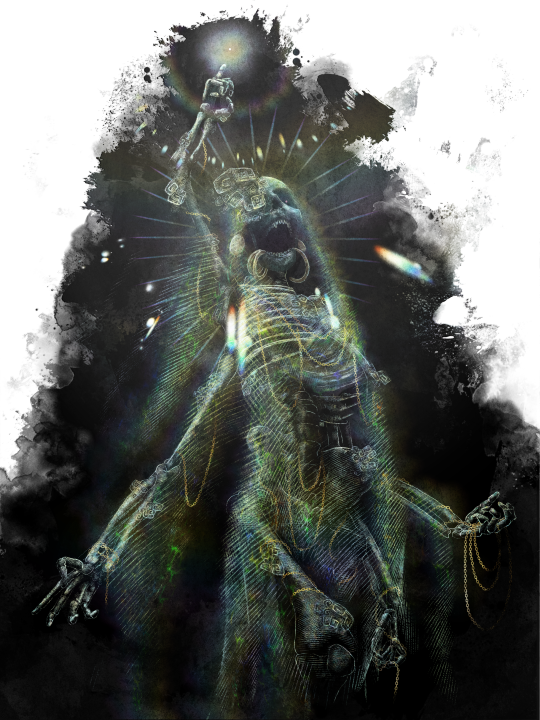
Not what I meant to be doing today but! Another shot at Kht'oth, the N'ghftu Elder God of Light, Spectrum, Energy, Movement, & Precipices.
The first to arrive to the well of power where Aanrah would eventually be made, Kht'oth is a incredibly ancient eldritch being who's seen the rise and fall of many worlds. Though he was convinced not to consume the power and allow a world to be made out of it, Kht'oth assumed he would care little about the inhabitants of Aanrah - as he had with previous worlds. Alas, a human sacrifice opened the door to the world of Feelings for a few brief and fleeing years, and now Kht'oth is a brooding, ticking timebomb, one mild inconvenience away from ending Aanrah once and for all for hurting him.
#khtoth#worldbuilding#deity#fantasy#original characters#ray art#nghftu#skeleton#fantasy worldbuilding
3 notes
·
View notes
Text


Trying to decide how I want to do art for characters for WA articles going forward - kinda thinking of just doing whatever vibes with them instead of trying to force them all in one style. Two I've messed around with - not settled on either piece, but!
Left - Kht'oth, the N'ghftu ('Eldritch Monstrosity') Elder God of Light, Spectrum, Energy, Movement, & Precipices - A bismuth and opaline skeleton light construct that is one hair trigger away from deciding it's Over for Aanrah
and
Right - Raisa, the Nuríian ('Unseelie' Fae) Intermediate God of Medicine, Restoration, & Resurrection - A very old ascended mortal fae who is very much sound of mind and body, does not have a complicated relationship with the Twilight King, and is definitely not doing modern-day drugs he's stolen from other planes.
#worldbuilding#fantasy#original characters#ray art#fantasy world#fantasy worldbuilding#khtoth#raisa#nuriian#nghftu#elder god#deity#gods#skeleton#the divine#fae#fay#fey
6 notes
·
View notes
Text

Been frustrated so I was jumping around but we have a kīaezxīātl (left, ie 'endbringer') of the six-legged quadrupedal form!
I need to remember to just start posting thoughts here too hhh
6 notes
·
View notes
Text

The yamahaeyuyud (dark elves) are done! Primarily residents of Aanrah's underground the yamahaeyuyud were originally shéngǒnshān (moon elves) belonging to the first moon, Gǒngbě. When the moon was destroyed, the newly-created god Oreik saved as many of the moon's residents as he could, who took to treating him as their patron. They were changed to their current form by Oreik to honor him and distance themselves from their original culture, although its influence is still obvious!
2 notes
·
View notes
Text
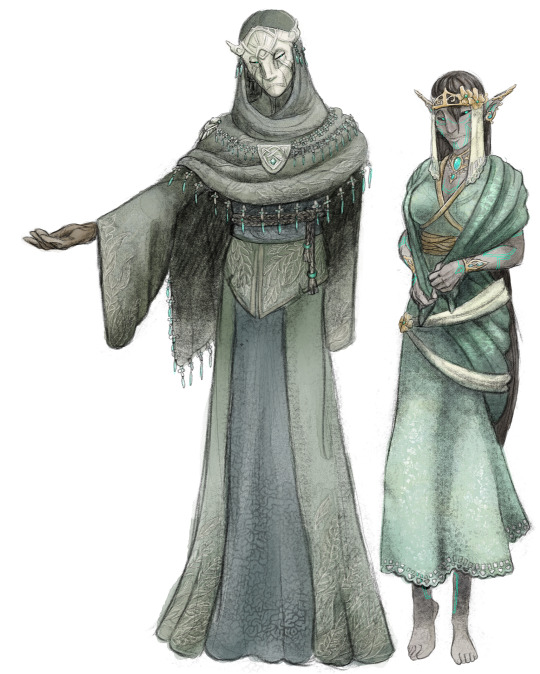

First two sets of art for my various races! The Nuríians (left, the "twilight fae") and the Nymauti. Messing with new brushes so it'sssss a lot of learning. Might redo the Nuríian woman...
(uncensored art for the Nymauti can be found on my BlueSky)
#worldbuilding#fantasy#original characters#ray art#fae#fay#fey#demon#nymauti demons#Nuriians#twilight fae
5 notes
·
View notes
Text


Uuu working working working. Finally getting around to drawing all my races, and Szaifudrus getting a facelift.
2 notes
·
View notes
Text

A piece of art for stub articles that I put next to a stub article summary to work as a hold over until I can flesh it out more. Featuring Sioa Angdóisa (right, wood elf) and Lurga'bundell Book-Bringer (left, gnome), a pair of once-mortal gods associated with history!
#worlduilding#fantasy#original characters#ray art#world anvil#wood elf#gnome#high fantasy#romantasy#Lurgabundell BookBringer#Sioa Angdoisa
3 notes
·
View notes
Text
Realizing all my old stuff had ttrpg tags but now I’m not actually aiming to make a campaign and just do writing instead. I’ll have to figure out new tags to use too
1 note
·
View note
Text


And it's done! I need to find somewhere else to also use the title because I put too much detail into shit I knew wasn't going to be visible whoops.
6 notes
·
View notes
Text


Working on banner stuff! My plan is to try to at least post a chapter a week of sort of anthology-ish work + hopefully more artwork so! At least that will be a start to getting things done. At some point I'll clean up the backlog here and spruce this up but! Also, post my current and I swear to god final WorldAnvil link for this world :"U
#ray art#art wip#homebrew#worldbuilding#original characters#fantasy#uhhh also figure out a good tag system while I clean stuff to make it easier for me specifically
8 notes
·
View notes
Text
OKAY I am. Doing what I SWEAR will be my last huge overhaul, and then I want to really start to focus on this seriously. It's becoming my focus project while I'm still recovering from surgery and figuring life out. Hopefully stuff will start being posted on here soon, as well as a link to the WorldAnvil page.
2 notes
·
View notes
Text
THIS IS obviously going to be a eternal WIP bUT here is now my current WorldAnvil for Aanrah! I plink at it periodically as my hyperfixation allows but hey-
2 notes
·
View notes
Text

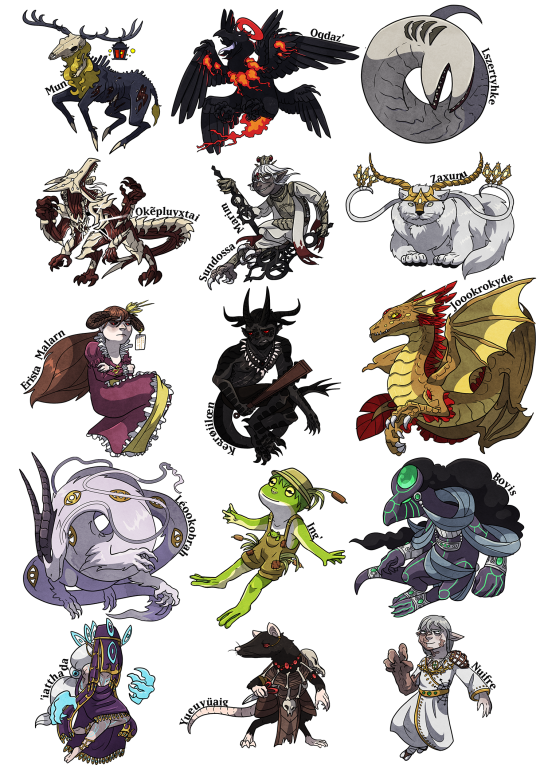
Two more little character sheets I forgot to upload awhile ago. Mostly gods, though the first sheet's third, fourth, and fifth row aren't. Or aren't really - Iuin & Zhün are demigods technically and Ua is maybe a deity maybe not.
#homebrew#ttrpg#dnd#dungeons and dragons#worldbuilding#tabletop#deity#oc#fantasy#Eu#The Night Hunt#Cruomfiege#Quede#Ceatth#Uzuenshai Ueltohuon#Meekhuhtahqn#Soru#Heliocene#Thaliadine#Ahndiirnliilul#Zhun the Exiled#Iuin of Clan Lan#Ua Oeru#Veross the Pyre-Hearted#Mun#Oqdaz'#Lszertyhke#Okepluyxtai#Sundossa Marim#Zaxunu
12 notes
·
View notes
Text
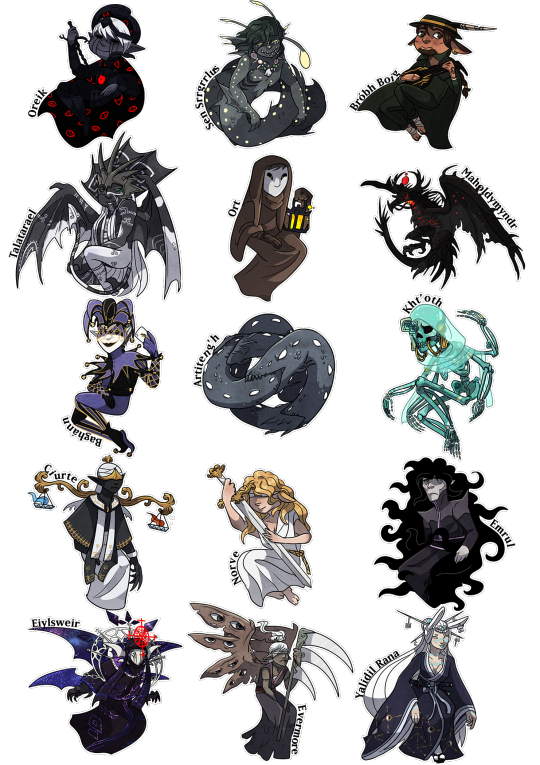
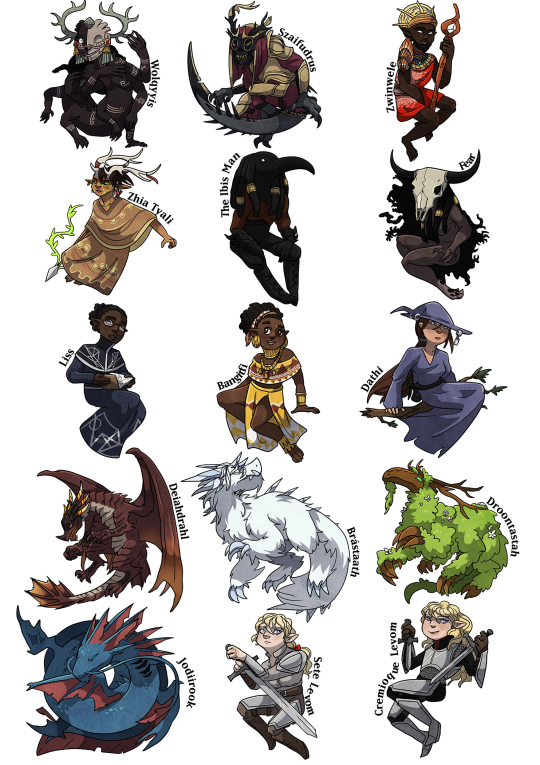
A bunch of kinda chibis for possible meme purposes and also just quick design things. All of them here are gods! So many names to tag...
#worlduilding#deity#gods#homebrew#ttrpg#dnd#dungeons and dragons#tabletop#oc#fantasy#dragon#dark elf#merfolk#elves#monster#oreik#sen srrgrrlus#brobh boig#talatarael#ort#maholdymyndr#baghann#artitengh#khtoth#ciurte#norve#emrul#eiylsweir#evermore#yalidil rana
19 notes
·
View notes
Text
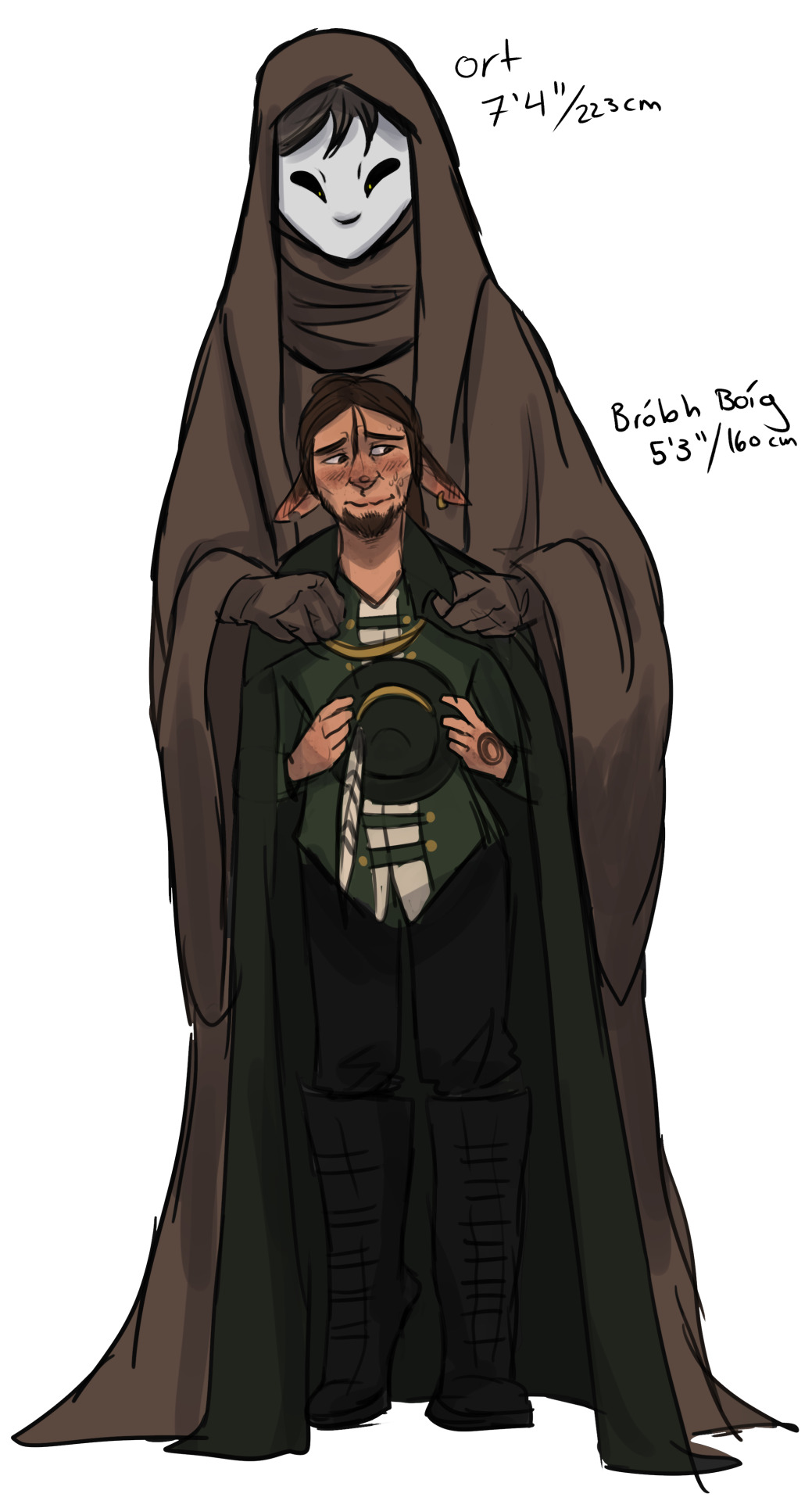
Also realizing I accidentally made Bróbh Boíg an Ort have a ridiculous height difference. When ur husband is a whole ass 2+ feet taller than you...
1 note
·
View note
Text
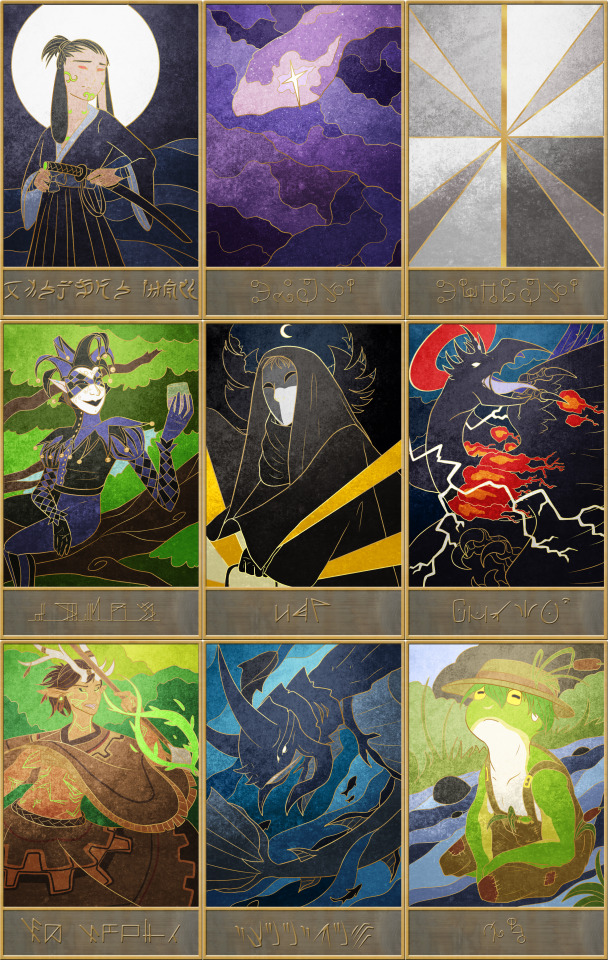
More deities! (And also Ort again because I fixed his textures).
From top left to lower right...
Ineyale Phor, the Yuenhüuian God of of the moon Baza
Mgachyt', the Outsider God of Stars & Astronomy
Mglw'nochyt', the Outsider God of Infinity
Baghánn, the Nuríian God of Jesters & Trickery
Ort, the Nuríian God of Woodlands, Forests, & the Lost
Oqdaz', the Lakrakian God of Lightning, Storms, & Strength
Zhia Tyali, the Náian God of Nature, Plants, & Wood Elves
Aðrrakroo, the Drylvuian God of Fish & Lakes
Ing', the Weg'olw'chyen God of Ponds, Rivers, & Frogs
#homebrew#ttrpg#dnd#dungeons and dragons#worldbuilding#tabletop#oc#ray art#deities#deity#fantasy#ineyale phor#magchyt#mglwnochyt#baghann#ort#oqdaz#zhia tyali#adrrakroo#ing
12 notes
·
View notes
Text
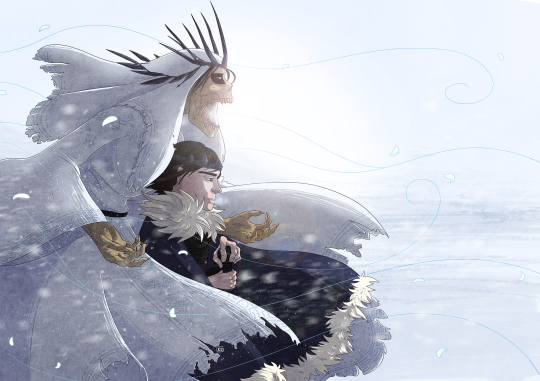
Young King Heliocene and Ahundiirnliilul, the lich his sister Thaliadine released to mentor and basically babysit him. At 12, Heliocene has a lot riding on his shoulders and already more enemies then he can count, so he needs all the help he can get...
#ttrpg#homebrew#worlduilding#lich#undead#oc#oc art#original characters#dnd#dungeons and dragons#Heliocene#Ahundiirnliilul#Ray's art
7 notes
·
View notes